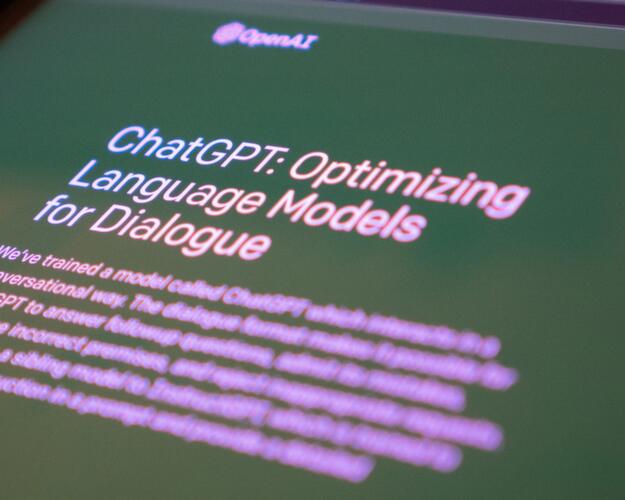Should we still do PR?
What’s the point of PR: Is PR relevant in 2019 and are their better ways to spend our communications budget?

“We don’t really see the value in PR”.
“We don’t feel the media understands the issues our clients care about”
“Does anyone actually read this?”
Over the past year, this theme has come up over and over with clients and senior people in the industry.
‘What value is this delivering?’ is a good question to ask of anything you are doing. As someone who spent over a decade in PR, the conclusions that do not always sit comfortably. But it’s time we did some soul searching and admitted the limits of PR, and how we might better spend our money.
Does PR deliver value?
In the case for PR: If you have something to say that merits relevant coverage, then it’s absolutely worth it. I remember former colleagues getting an innovation in the national and trade press, and securing serious investment as a result. So, I can say PR can work to phenomenal effect.
But, that it works in some circumstances doesn’t mean it works in all. In this case the client, the value they created, and the call to action were inherent parts of the story.
For most companies, such stories come along rarely. Too much PR budget is then spent on manufacturing stories where the client is barely relevant.
Take ‘newsjacking’ or ‘issues jumps’, sending journalists commentary on breaking news stories in the hope they appear in their article. I’ve never heard of any direct impact from that. In a world of infinite information, a couple of sentences on someone else’s story is not enough to grab attention unless it is truly ground-breaking insight. And unless you are already a household name, there is no way to get enough of these to generate any meaningful brand awareness (and if brand awareness is your goal, PPC is infinitely more cost-effective than PR).
The PR survey is another good one. A couple of grand to YouGov and you’ve got some useful stats to say something ‘newsworthy’. This might get you coverage, but will anyone look at this and think ‘here’s a company I can trust’? It depends on the research, but in my experience, mostly not. The most egregious example I’ve seen is research by a printer company which claims “Business leaders identify print as a key strategic asset for growth and innovation” - a headline so absurd, it immediately negates any other value in the findings.

And all that’s before we even consider the vast amount of PR activity that never even makes it into the media.
“But media is a trusted source of information, so being in it adds credibility. Right”?
This statement is the foundation of the value of PR, but is it true?
Certainly, there are some very good publications, but does that mean ‘media coverage = value’?
The thing is, good publications stay good because they only cover real news. If you have lots of this (say you are a University or Google) then PR is a great way to spend money.
But many publications these days compromise on quality. Journalists tasked with churning out five stories per day to maximise clicks are happy to accept pre-packaged PR stories, the bolder the better. Such publications are where most PR ‘results’ appear, but the clicks over quality approach means the people you actually want to reach will not read them.

Even insiders admit this. I’ve heard more than one tech journalist say that a lot of their claimed audience figures is just Tech PRs searching for ideas. And plenty of decent trade sites run ‘industry blogs’ as an easy way of generating regular content, but engagement is low.
Herein lies the PR paradox. The genuine benefit of a good story in good media makes PR an attractive prospect. But when you can’t get in the good media, you settle for media which isn’t worth being in, then congratulate yourself for being in the media.
A better way to spend the PR budget
Good B2B communications offers your audience insight and solutions to their challenges. These challenges are often relevant only to a limited audience. Many media aren’t interested in a story that will only get a few clicks (even if those are from CXOs), and most journalists don’t have the time or experience to get their teeth into these issues (though if you have a reasonable shot at those that are, then PR becomes much more valuable).
As a result, many companies are tackling these topics themselves through weightier thought leadership on challenging business issues, which they can target directly at customers, investors, government and partners. Snap PR surveys are being replaced by research designed to increase understanding of unsolved customer challenges – which is of genuine interest to potential customers.
Such deeper insight can make for better media coverage in better publications. But media, with its broad audience to please and click targets to meet, is by no means always the best channel. The best industry insight I read comes to me through Linkedin, or is passed on by contacts (good content gets shared – who knew?). In my PR days, the article that stands out as getting the most relevant engagement was written not by a journalist, but by a connection on LinkedIn – on a story dismissed by most trade media as too niche.
Companies and universities produce some great reports, features, and thought leadership – such as this piece we worked on for The London School of Hygiene and Tropical Medicine. Many consultancies produce excellent in-depth reports (we highlight some examples here). Many are better – and certainly more useful to their target audiences - than what you will read in the media.
Takeaways/TL;DR
- See PR as a tactic in your communications arsenal, not a programme in itself. If you have a newsworthy story or insight aligned to your strategic goals, then PR is an excellent tactic to use. But don’t use PR when there’s no value beyond coverage numbers
- Otherwise, focus resources on developing higher value content which offers genuinely useful insight to, and solves challenges of, your target audience
- Once you have this content, you can be much more targeted and more able to talk to your audience’ actual needs
- Such content can then be used for higher value PR, as well as social media, events and advertising
This approach has two big advantages. A psychological one in that, by being useful and relevant, it is more likely to resonate with your target audience. And a process one, in that it ensures all PR and marketing will drive back to a central piece of content where success can be measured and leads captured.
For more insights like this, sign up to our newsletter.









